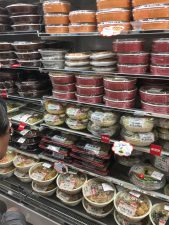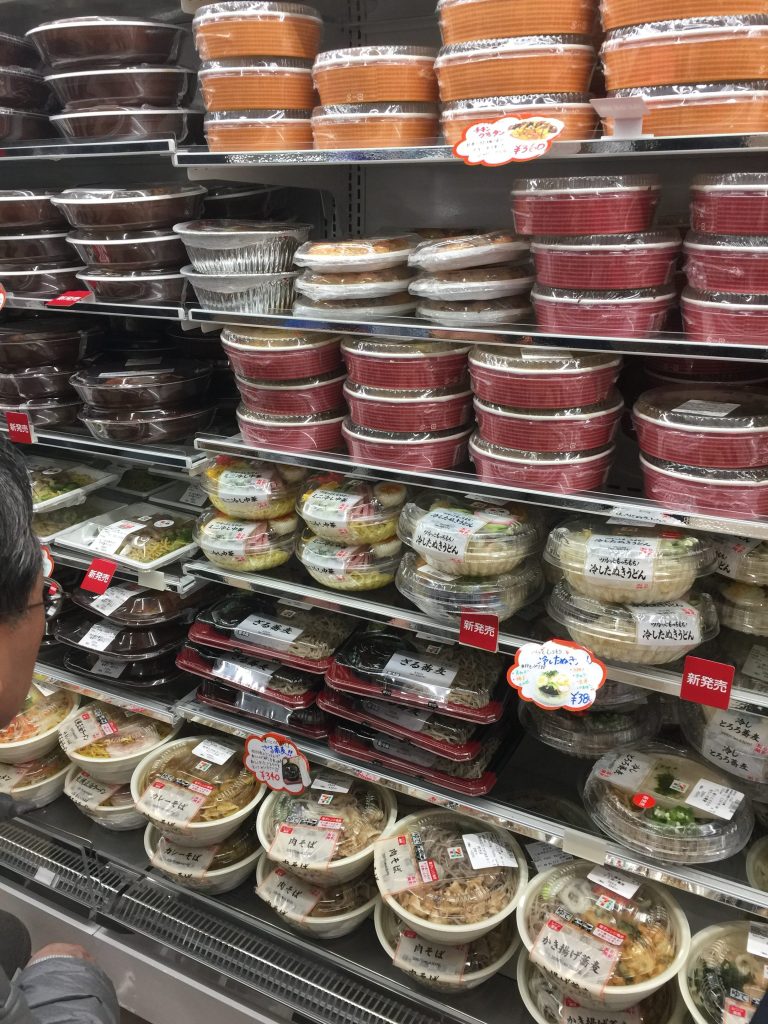
Over the last few years, we have seen convenience retailers expand food and snacking options in store. We are seeing retailers move away from a basic offer of pies and sausage rolls to a more developed and broader offering. While Pies and Sausage rolls remain the core, the offer has developed to a mix of wrapped generic offerings to unwrapped café style offers. Each retailer, however, has seen the need to continue to look at broader and better quality products. This is particularly evident in sandwiches, which have improved in the quality and variety that is now available in the channel. We have also seen the expansion of salads and sushi in this market, and more recently into take-home meal solutions into some outlets. On top of this we have also seen bakery snacks like donuts and muffins as well as a broader healthy snacking gain greater exposure at the expense of more traditional categories in prime locations.
So what’s next?
I recently had the opportunity to visit Japan, which has built a very strong convenience offer with an incredible distribution system and acceptance from shoppers who visit these stores every day. The opportunity through the NACS Asia Summit was to visit and see, firsthand, both the production and distribution facility of Seicomart in Sapporo. Seicomart has approximately 1100 stores in the Hokkaido region, and it remains a family-owned business. The food offer, which is especially fresh in convenience stores in Japan, is second to none. With three deliveries per day, stores continually look full, despite the fact that on average, over 1000 shoppers visit each store per day. The
product offering is quite diverse, although it centres on a rice base product and they do have day part solutions. What was evident though was the fact that on the production side for products, especially sandwiches and wraps, the process remains quite manual with up to 11 people per manufacturing line. This would be the biggest challenge to overcome, with our labour costs more than double the seven US dollars per hour paid in Japan. The manual process also lends itself to individual differences in product and potential issues from a consistency perspective, although finished products always seemed to be full of ingredients. What was also very different was the distribution of items, with most products available to be ordered in single quantity. The ability for stores to order in individual quantities would obviously work towards reducing waste, however it would add significant costs on both production and the number of deliveries. What was evident though was the amount of food and snacking solutions that were proprietary products, as retailers continued to look for ways to differentiate themselves in the market.
What could we do?
With the limitations around cost and the pure scale of getting products to store in Australia, the Japanese model
would be limited to a pure central play. What you can see, however, is that the success of the channel in that market, the size of the prize for retailers would potentially be worthwhile. What is great is that we are seeing retailers looking outside the box in the Australian market at the moment, with some great new offers. This is showing a willingness to learn, not only from other markets like Asia and Europe, but to trial different offers that create a reason for shoppers to visit the store. We have seen huge success in the Hot Coffee offer in the channel over recent years, and it is great that retailers are reaping the rewards for their investment, however we need to go to the next level with our food offer. I believe that we will remain focussed on ‘true fresh’ across the board, and see that is possible to introduce different offers in select areas.
The challenge is now testing what is achievable and what customers will accept, and that does take trial (and error), but it will certainly move the channel to where it can be recognised as more than a just string of petrol outlets.

